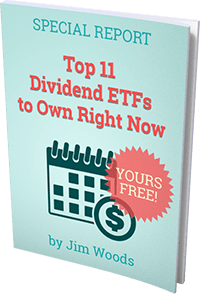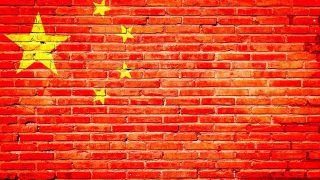Millions of Americans hold U.S. government Treasury bonds in their portfolios. Because the U.S. economy is the largest, and by comparison, most stable government entity in existence, Treasury bonds have been sought after as a place to park money when global markets are in turmoil. Of course, there has been plenty of turmoil in the global markets during the past several years. Part of the reason for that volatility, ironically, is the buildup of debt that occurred during the prior three decades.
I am referring to corporate debt and personal debt, as well as sovereign debt. That deadly debt buildup continued — fueled in large part by accommodative low interest rate central bank policies — until the first phase of the debt bubble burst in 2008, a bustout that took down some of Wall Street’s biggest financial institutions, that crushed the housing market, and that plunged the global economy into what has been called the worst recession since the Great Depression.
The solution to this calamity, which was caused largely by bad government policy and bad central bank policy, was massive stimulus spending by governments around the world, more artificially low interest rates and more money creation by central banks.
In other words, their solution to the sickness was to inoculate the markets with more sickness.
So, ask yourself this question: Given the mismanagement of governments around the world, and their central bank partners, why should there be any different outcome next time?
The answer is there won’t be, and history is destined to repeat itself. This repetition means your money and your financial liberty are in danger from yet another government-fueled busted bubble that could be even more calamitous than anything we’ve seen in the past.
When will this massive debt bubble burst? That’s the funny thing about bubbles, nobody knows precisely when the bust will happen, and therefore few are prepared for the fiscal fallout. It’s similar to those who live in a flood, hurricane, tornado or earthquake zone. You know that for the most part, the damage can come at virtually anytime. And if you’re not prepared, then you are going to suffer the painful consequences. Well, it’s the same with debt and other financial bubbles.
If you aren’t prepared for the consequences before the bubble burst, the outcome could be disastrous.
Now, if you think that Treasury bonds are going to continue to be safe bets for some time, and if you have a lot of money tied up in these bonds, you need to pay particularly close attention.
Since the latest financial crisis the Federal Reserve has intentionally kept interest rates at virtually zero. That’s steadily pushed the yield on the 10-Year Treasury note down from 5.25% in mid-2007 to 1.60% in April 2013. As you likely know, when bond yields fall, bond prices rise — and hence the incredible surge in bond prices over the past several years.
This surge in bonds also has brought millions of investor dollars into the space. According to the latest information available from the Investment Company Institute, through the first eight months of 2012, investors poured $220 billion into bond funds. Moreover, since the financial crisis began, investors have pumped some $900 billion into bond funds, while also withdrawing $410 billion from equities. This piling into an asset class by hoards of investors actually is the first red flag signaling a potential onset of a busted bubble. However, in the case of bonds, the bubble has much stronger reasons for an impending bust.
The real reason why bonds could bust is, once again, due to the nature of bad governmental policy.
You see, with the economy struggling, and with a greater and greater tax burden from higher personal income tax rates, ObamaCare tax increases, and myriad other increases in local and state taxes, the economy could easily slide back into recession. If the consequences of a recession, and the lack of funds coming into the government’s coffers, threaten the government’s ability to sell Treasury bonds at the current low interest rates, then bond yields will have to soar to attract the capital required to keep feeding the deficit-spending beast.
When rates rise, bond prices fall, and that means the value of your bond holdings will fall.
Oh, and guess what? This is already starting to happen. In May, the benchmark 10-year Treasury yield vaulted from 1.60% to 2.12% — or more than 50 basis points in just four weeks.
What makes this scenario potentially worse is that the “solution” to this self-generated government crisis will be for the Federal Reserve to print more money to get us out of debt. Doing so, however, would just cause inflation, and that situation would reduce the actual value of the bonds you hold, because you essentially would be getting paid back with cheaper dollars, and at a fraction of the true value of the loan you originally made to the feds.
As lenders (bond buyers) account for the inflation factor, yields on bonds will spike even further, and that will cause your bond holdings to fall even more than they already have under this very real, and frightening, scenario.
You see, massive printing-induced inflation is just another form of partial default, because when governments dilute their currencies, they only pay off a fraction of the true value of their original debt. Therefore, interest on government bonds will rise even further, as lenders factor in the probability of future inflation into their purchasing calculus.
If things got bad enough, and if the government couldn’t attract enough buyers into the bond market, then the next solution would be what’s known as monetization of the debt by the Fed. This monetization of debt occurs when the central bank steps in and purchases massive amounts of Treasury bonds in an effort to lower interest rates. That, however, would cause severe inflation and even more pain for bondholders, as the dollar’s destruction would cause them to be paid back far less than their original invested dollars.
As you can see, it is the arrogance of central planners and their willing accomplices at the central bank that continues to institute policies that inevitably result in the destruction of your wealth — wealth that you need to preserve and protect.
The only solution to the fallout from a busted bond bubble is having a variety of asset classes in your portfolio that won’t crater along with Treasury bonds. Ways to protect your money from a meltdown in bonds include owning investments such as precious metals, stocks of strong companies that dominate their respective sectors, the highest quality corporate bonds and even foreign currencies.
Yet perhaps the best way to guard against the ravages of a busted bond bubble is to first make sure you reduce your exposure to long-term Treasury bonds. Getting your feet out of the fire so you don’t get burned is a crucial first step, and one that makes the rest of the journey a whole lot easier.
Jim Woods is editor-at-large of TheWealthShield.com. You can follow him on Twitter: @Woodsish.


![[happy investor up arrows]](https://www.stockinvestor.com/wp-content/uploads/shutterstock_124509472.jpg)
